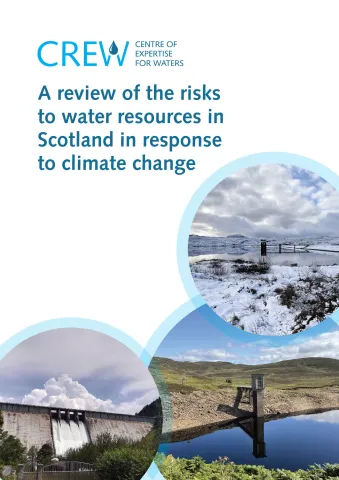There is “irrefutable evidence” that the global climate is changing due to human activities. Even in ‘water rich’ countries like Scotland, these changes will have implications for the future of water resources. In Scotland, changes in rainfall patterns (spatially, temporally, and seasonally), together with the frequency and magnitude of extreme weather events including flood and drought, would result in significant challenges for Scotland’s key industries including the water sector. Such changes will impact drinking water supply, energy, agriculture, economic activity, and supply chains. Although there are inherent uncertainties surrounding the climate change projections for precipitation at the global scale, and what they mean regionally for Scotland, especially in the short-term (e.g., the next 30 years), water companies in Scotland increasingly need to compare and balance the evidence relating to changes to Scotland’s climate with their medium to long term planning decisions about the way water is stored, managed, and used.
This evidence report provides a review of studies that have assessed historical and future river flow and water availability changes in Scotland, as well as evidence on how climatic, hydrological, and other catchment-based processes may influence water resource availability in the future. Recommendations for future lines of research on effects of climate change on Scotland’s water resources are made.
Some of the key findings of the review include that river flows (outflows) have increased significantly over the 1961-2010 period in Scotland. While total annual outflows in the UK may not change significantly, future seasonal projections in the UK generally show seasonal reductions in spring and summer flows, a mixed pattern in autumn flows, and small increases in winter flows.
The review highlights that there is uncertainty regarding future frequency, duration and magnitude of both droughts and floods, including their timing and spatial extent, due to the different methodologies, indices and thresholds used and different types of hazards analysed in the studies reviewed. However, there is a consensus relating to an increase across all metrics (frequency, magnitude and duration) Scotland-wide in a warming climate. In terms of droughts, in Scotland, compound hydro-hotspots (droughts and floods) are projected to occur across eastern Scotland and the Highlands and Islands, including the Loch Ness and River Tay catchments in the far future. In the 2050s, irrigation demand, especially in summer, may rise due to an increase in temperatures alongside an increase in potential evapotranspiration.
| Attachment | Size |
|---|---|
| CD2021_02 Main Report | 4.64 MB |
| CD2021_02 Appendices | 3.37 MB |
